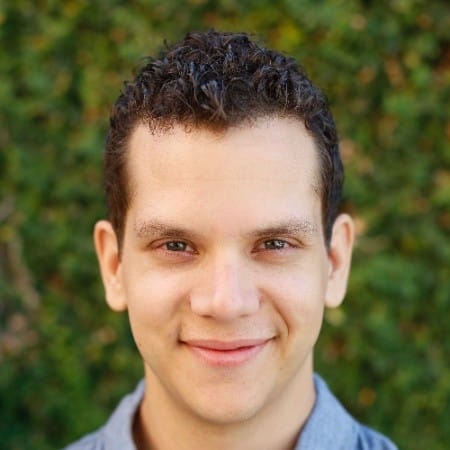Contents
In discussions about guitar effects nowadays, it’s not uncommon for people to bring up the topic of envelope filter vs. auto-wah. While both effects can shape the sound of guitars, they do so in different ways. Understanding the differences between these effects is key if you want to choose the right tool for the right job. Take a look at the following information to make an informed purchase.
Characteristics Of The Effects

| Envelope Filer | Auto Wah | |
| Operation | Responds to the dynamics of the input signal | Modulates the cutoff frequency at a fixed rate |
| Filter type | Typically uses a low-pass filter | Can use various filter types (low-pass, band-pass, etc.) |
| Control | Controlled by the player’s picking dynamics and attack | Controlled by an LFO (Low-Frequency Oscillator) |
| Sensitivity | Sensitive to the volume and attack of the input signal | Sensitive to the input signal’s amplitude |
| Expressiveness | Allows for dynamic and expressive filtering effects | Offers a fixed but rhythmic and consistent wah effect |
| Tonal range | Can produce a wide range of filter sweeps and resonant tones | Offers a narrower range of tonal possibilities |
| Sound palette | It can create subtle filter effects or extreme wah-like sounds | Primarily used for classic wah-wah effects |
| Control option | It may have additional controls for range, depth, and resonance | Typically limited to rate, depth, and sometimes resonance |
| Playing style | Suited for players who want to manipulate their playing dynamics | Suited for players seeking a consistent rhythmic wah effect |
| Popular examples | Electro-Harmonix Q-Tron, MXR Micro Q-Tron | Boss AW-3 Auto Wah, Dunlop Cry Baby Bass Wah |
An In-Depth Analysis

Operation
For your information, Envelope Filter responds to the dynamics of the input signal. That means it uses the volume and attack of the signal to control a filter’s parameters, resulting in dynamic filtering effects. Auto Wah, on the other hand, modulates the cutoff frequency of a filter at a fixed rate. In use, it relies on an LFO to control the filter’s movement, creating a rhythmic and consistent wah.
Sensitivity
Envelope Filters are sensitive to the volume and attack of the input signal. By responding dynamically to changes in volume and attack, it allows expressive and responsive filtering effects in most of the cases. That differs from Auto Wah which is sensitive to the input signal’s amplitude rather than its dynamics. Since the input signal level is what triggers the effect in Auto Wa, it creates a consistent and rhythmic filtering motion.
Filter Type
Typically, Envelope Filter uses a low-pass filter that permits frequencies below a certain cutoff point to pass through. It’s able to create various filtering effects ranging from resonant tones to sweeping frequency responses. About Auto Wah, it can take advantage of different filter types such as low-pass, band-pass, high-pass filters…. The result is a high degree of versatility which is a big plus if you seek tonal variations and filtering possibilities.
Responsiveness
In layman’s terms. Auto Wah offers a fixed but rhythmic and consistent effect. While its level of expressiveness is not as good as Envelope Filters, Auto Wah still excels at delivering a specific rhythmic character to the sound. In the case of Envelope Filter, its responsiveness to dynamics ensures that people can achieve dynamic and expressive filtering effects as they see fit. Players should be able to freely create subtle or extreme filter sweeps and resonant tones by adjusting their picking style.
Control Options
Some Envelope Filter models pack quite a few controls beyond sensitivity, further customization, and tonal shaping options that enable filter effect’s range, depth, and resonance adjustments. For Auto Wahs models, they typically have controls for rate, depth, and sometimes resonance. While they contain fewer control options compared to Envelope Filters, they are designed to deliver a straightforward and easy-to-use wah effect.
Conclusion
Both Envelope Filter and Auto Qah are great tools for guitarists experimenting with different sounds and textures. Envelope Filter features dynamic and expressive filtering effects so it suits those who need something responsive. Meanwhile, Auto Wah delivers a consistent rhythmic wah effect through fixed modulation, perfect for classic sounds. Of course, the choice depends on personal preferences and musical context.
Frequently Asked Questions

Where Should I Place Envelope Filter?
Although there are no rigid rules, it is wise to position Envelope Filters toward the beginning of the signal chain. Typically, filters, including Envelope Filter, are commonly placed at the start of the chain, immediately following tuner pedals. Placing them after distortion effects may result in a potentially chaotic tone.
What Are The Main Types Of Filters?
Main types of filters include low-pass and high-pass filters that allow signals below and above a certain frequency to pass through respectively. However, there are other types of filters as well.
- The band-pass filter allows a specific range of frequencies to pass through while blocking others.
- The notch filter blocks only a specific frequency range while allowing all others to pass through.
These four filters see extensive use in various applications, including audio processing, image processing, and telecommunications.

Hi music fan! I am Jeff. Hope that you enjoy some stuff I shared here in my personal blog.
About myself, Currently I am in charging as Artist Manager/Music Supervisor at 72 Music Management. I did managed album to Grammy Award in 2017 with 7 Nominations from 2014-2020 and had the opportunities to work with : A.J. Croce, Blind Boys of Alabama, Bobby Rush, Dom Flemons, Dustbowl Revival, Sarah Grace
Governor of the Memphis Chapter of The Recording Academy is one of a award that I am lucky to achieved.
